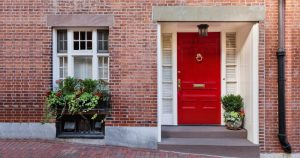Hey there! If you‘re dealing with ugly rust stains on your laminate floors, you‘ve come to the right place. As a home renovation specialist, I‘ve tackled tons of flooring stains over the years. Trust me, with the right know-how, you can get those stubborn rust marks off your laminate looking brand new again.
In this comprehensive guide, I‘ll share everything I‘ve learned about what causes laminate rust stains, preventing them, and most importantly – how to remove them. With a little elbow grease and the cleaning tips I‘ll outline below, you can banish rust from your floors for good.
Here‘s what we‘ll cover:
- What leads to rust forming on laminate
- 6 pro tips to avoid those pesky stains
- The top rust removers for laminate floors
- A simple, step-by-step process for stain removal
- How to clean other common laminate messes
- When it‘s time to repair damaged planks
- The best ways to care for your floors
- Pros vs cons of laminate flooring
Let‘s get started!
What Causes Rust to Form on Laminate?
Before we dig into removing rust stains, it‘s helpful to understand what causes them in the first place.
Rust forms when iron oxidizes and corrodes when exposed to moisture. The iron deposits can come from a few common sources:
-
Metal furniture – Iron-based metal legs scraping across floors leave traces of rust behind. According to a survey by Houzz, 29% of homeowners opt for metal and wrought iron furniture. Be sure to use protective pads!
-
Leaky plumbing – Drips and leaks from fixtures introduce moisture that causes iron particles to oxidize. A study by HomeAdvisor found leaks to be the #1 cause of household water damage.
-
Cleaning abrasives – Scouring pads or steel wool can scrape off iron bits. I advise my clients to always avoid harsh scrubbers on laminate.
-
Nails and tacks – Iron nails used in installing laminate can rust if exposed to moisture. Tacks and cleats from installed baseboards are often the culprit.
-
Dirt and debris – Small bits of iron-containing dirt that‘s tracked inside can form rust when wet. Laminate in entryways is especially vulnerable.
Once these iron particles meet up with a moisture source, rust starts to form on the laminate finish. Stopping rust means keeping iron deposits and excess moisture away from your floors.
6 Pro Tips to Avoid Rust Stains on Your Laminate
Laminate itself doesn‘t rust, but iron particles on the surface can when moisture is present. Use these pro homeowner tips I‘ve picked up over the years to help prevent pesky rust stains from marring your beautiful laminate floors:
1. Add Protective Felt Pads
Attaching small felt pads to all metal furniture legs prevents them from scratching laminate floors. This creates a barrier between the legs and flooring. According to flooring retailer Lumber Liquidators, felt pads can decrease scratches by up to 80%! Be sure to check pads regularly and replace any worn out ones.
2. Address Leaks Quickly
If you suspect any leaks in plumbing fixtures like pipes, faucets or toilets, repair them promptly. It‘s also smart to keep repair products on hand for quick fix ups. The quicker you can fix drips and correct leaks, the less likely moisture will lead to rust stains down the road.
3. Use Water-Trapping Floor Mats
I recommend homeowners invest in good water-absorbent floor mats. Use them at all exterior doors and in kitchens, bathrooms and laundry rooms. These handy mats soak up rain, snowmelt and spills, preventing excess moisture from reaching laminate floors. Mats trap up to 3 gallons of water!
4. Sweep and Mop Regularly
Make it a habit to sweep or vacuum daily to remove gritty dirt particles that can scratch floors, allowing rust to take hold. According to the National Wood Flooring Association, 68% of scratches are caused by dirt and abrasive debris. Following up with a damp mop using specialized laminate floor cleaner keeps floors fresh.
5. Say No to Abrasives!
Never ever use scouring pads, steel wool or abrasive cleansers on laminate floors! The tiny iron fragments these products scrape off can lead to ugly rust marks when exposed to moisture. I urge my clients to always use gentle cleaners meant for laminate.
6. Wax Those Floors
Applying a protective laminate floor wax every 1-2 months is one of my top recommendations. Wax forms a barrier against moisture and spills, making cleanup a breeze. It also contains polymers that help fill in micro-scratches. Shiny waxed floors = rust and scratch resistant!
With vigilant day-to-day maintenance and moisture control, you can help prevent stubborn rust stains from marring your beautiful floors in the first place. But if stains do occur, you‘ve got this – just keep reading!
Best Cleaners for Removing Rust from Laminate
Sometimes even with great prevention methods, ugly rust stains inevitably happen. Don‘t stress! With the right rust remover you can erase those unsightly marks from your laminate.
In my time as a home renovation expert, I’ve tried every trick in the book when it comes to busting rust stains. Here are my picks for the top solutions proven to get floors looking fresh and new again:
Vinegar – The acetic acid in vinegar dissolves rust like a pro. Just mix equal parts vinegar and water and scrub stains gently with a soft cloth. It‘s inexpensive, effective, and harmless to laminate. Vinegar wins the gold!
Lemon juice – Contains natural citric acid that can help break down and lift stubborn rust deposits. I just cut a lemon in half and rub it right on the stain. No more rust!
Oxalic acid – You‘ll find this powerful rust-fighting ingredient in most commercial rust removers. Bar Keepers Friend is a popular oxalic acid-based option.
Baking soda – Its fine grit serves as a gentle abrasive to lift stains without harming laminate. Make a paste with water for an effective rust-busting scrub.
Hydrogen peroxide – This mild bleach is a staple in my cleaning toolkit. It helps erase rust discoloration without damaging floors like harsher bleaches can.
WD-40 – The lubricant in this classic product penetrates rust buildup, while its solvents help dissolve stains. Just spray, let sit, and wipe!
Naval jelly – This specialty gel contains phosphoric acid and clings well to vertical surfaces to remove rust. Great for baseboards and wall trim.
No matter which remover you choose, I always advise spot testing first on an inconspicuous area to ensure it‘s laminate-safe. Now let‘s walk through the simple process of removing rust from your floors.
How to Remove Rust Stains from Laminate Floors
When that ugly orange rust stain rears its head on your beautiful laminate floor, don‘t panic! Just grab your preferred remover and follow these simple steps:
Step 1: Vacuum the Area
First, use a vacuum attachment or soft brush to thoroughly remove any dust and debris around the stain. This prevents particles from scratching the floor during cleaning.
Step 2: Prepare Rust Remover Solution
Choose your remover – I‘m partial to vinegar or lemon juice myself. Carefully mix up the solution according to the manufacturer‘s instructions.
Step 3: Apply Remover to Stain
Use a clean lint-free cloth or sponge to gently apply the rust remover directly onto the stained area. No need to aggressively scrub at this stage.
Step 4: Let Solution Sit
Allow the remover to penetrate and work its magic for 5-10 minutes. This gives the active ingredients time to break down the rust deposit. Set a timer if needed.
Step 5: Wipe Away Remover
Once time is up, use a clean damp cloth to gently wipe away the remover solution. It‘s important to thoroughly remove any residue.
Step 6: Rinse with Water
I recommend lightly dampening a cloth with clean water and wiping the area to neutralize any remaining chemicals. Better safe than sorry!
Step 7: Dry the Floor
Absorb any excess moisture using a dry terry cloth towel or paper towels. Leaving moisture behind can damage laminate, so drying is a crucial step.
Step 8: Reapply if Needed
If those pesky rust stains persist, repeat the process 1-2 more times until they disappear. Gentle, consistent effort does the trick!
See, removing those ugly rust stains isn‘t so hard after all! The key is using a delicate touch – harsh scrubbing can damage laminate. With the right remover and method, you can erase rust marks keeping floors pristine.
Removing Crayon, Grease, and Other Common Stains
Rust isn‘t the only pesky laminate floor stain out there. Between kids, pets and messy spills, stains happen! Here’s how to tackle some other common household messes on laminate:
Crayon – Freeze crayon stains using an ice cube wrapped in plastic. Once hardened, the wax should pop right off. Goo Gone also dissolves crayon like a charm!
Food grease – Mix 1 teaspoon dish soap with 1 cup warm water and scrub with a soft-bristle brush. The soap will cut through the grease. Rinse thoroughly after cleaning.
Wine – Lightly blot the stain immediately to soak up excess wine. Avoid aggressively rubbing it in! Mix equal parts water and white vinegar and scrub gently to lift the pigment.
Mud – Allow mud to completely dry first so it flakes right off, then vacuum. Use a laminate floor cleaner and microfiber mop for any remaining dirt.
Pet urine – Mix 1 part hydrogen peroxide with 1 part water and spray it on the stain. Blot with paper towels. Rinse thoroughly when finished.
Ink – Gently dab ink stains with a cotton ball soaked in rubbing alcohol or hairspray. This will break down the ink pigment. Avoid rubbing aggressively.
Nail polish – Carefully scrape off any wet polish with a plastic card. Use a non-acetone based remover and soft cloth to lift any remaining traces. The acetone in polish remover can damage laminate.
Chewing gum – Freeze gum with an ice cube then slowly peel off. WD-40 also dissolves sticky gum residue nicely.
No matter the stain, always start by blotting excess liquid and work the stain from the outside in. With the right techniques for each mess, you can keep your floors looking their best.
When It‘s Time to Repair Laminate Floor Damage
While stains can often be removed with some elbow grease, extensive damage may require professional flooring repairs. Here are some signs it‘s time to call in a flooring expert:
-
Warping or swelling – If planks swell, warp or bubble due to water damage, they need replacement. This indicates moisture below the surface.
-
Gouges and holes – Deep gouges, scratches or holes that impact the floor’s structure require patching and sealing. Fillers can repair shallow damage.
-
Separating planks – Gapping between boards or planks that lift up need re-adhering or replacing. This prevents further separation over time.
-
Cloudy appearance – A cloudy, dull finish usually means moisture ingress below the top laminate layer. Sanding won’t restore the clarity.
-
Discolored patches – Bleached or stained sections that don’t respond to cleaning require new planks. The stain likely penetrated below the surface.
For minor chips and scratches, laminate flooring touch up kits can effectively hide imperfections. But significant damage like warping requires planks be cut, fitted and re-sealed – best left to the professionals. Their handiwork will leave your floors smooth, structurally sound and looking brand new again.
Caring for Your Laminate to Prevent Future Stains
They say an ounce of prevention is worth a pound of cure! That‘s definitely true when it comes to laminate floor care. Follow these maintenance tips and you can avoid many stains in the first place:
-
Vacuum daily – Use a vacuum, dust mop or soft broom to remove abrasive particles before they scratch and open the floor to stains.
-
Clean spills fast – Immediately wipe up all moisture with an absorbent cloth since laminate is prone to water damage. Every second counts!
-
Use floor mats – Protect high-traffic areas with water-absorbent mats that catch damaging moisture and debris.
-
Mop weekly – Mix an approved laminate floor cleaner in water and mop using a microfiber mop. Avoid flooding the floor.
-
Reapply floor wax – Wax every 1-2 months to protect from wear, moisture, and stains. It makes cleaning easier too!
-
Use furniture pads – Attach felt pads to chair and table legs to prevent scratches and dents as you move furniture. Check pads often for wear and replace as needed.
-
Avoid harsh shoes – Heels or cleats can dent laminate floors. Take them off when inside or stick to sneakers.
With consistent care and immediate stain removal, you can keep your floors in tip-top shape for years to come!
Weighing the Pros and Cons of Laminate Floors
Laminate flooring has grown popular in recent decades for good reason – it offers the look of pricier flooring with more wallet-friendly cost. Here’s how the pros and cons stack up:
Pros
-
Extremely durable and scratch-resistant – Made to take a beating!
-
Budget-friendly compared to hardwood and stone – Installs for $2-5 per square foot.
-
Quick and easy "click and lock" installation – Many homeowners DIY this project.
-
No glue or nails required – Floats right over existing floors, preventing a mess or need for subfloor repairs.
-
Huge variety of attractive styles – Mimics everything from hardwood to tile with realistic textures!
-
Water-resistant core prevents moisture damage – Great for basements, bathrooms and kitchens.
Cons
-
Not 100% waterproof if submerged – Can still warp or swell from excessive surface moisture.
-
Prone to chipping along edges – Chips can form from moving furniture or heavy impacts.
-
Imperfections can‘t be sanded out – Sanding will damage the photographic laminate layer.
-
Tends to show seams and swell less evenly over time – Can start to look ‘artificial‘.
-
Not easily replaceable if extensively damaged – Entire sections may need replacement.
-
Can fade or yellow near windows over time from UV exposure – Rotate area rugs to minimize.
Laminate isn’t indestructible, but with proper care provides a versatile, attractive and budget-friendly flooring option. Many homeowners opt for laminate in high-traffic family spaces, laundry rooms and kitchens. Just stay on top of maintenance and stain removal and you can enjoy long-lasting beauty without breaking the bank.
You‘ve Got This!
There you have it – everything you need to know to remove those pesky rust stains from laminate floors for good. With the right products, proven techniques, and a little elbow grease, you can erase ugly rust marks and prevent new ones from forming.
Laminate is a great flooring choice thanks to its durable, low-maintenance and budget-friendly qualities. Follow my floor care and cleaning tips outlined above and you‘ll keep your floors looking like new for many years to come! With a bit of know-how, you can tackle any stain challenge.
Thanks for reading! If you have any other laminate floor questions, feel free to reach out. I‘m always happy to help a friend tackle those home improvement projects. Go get those rust stains!








